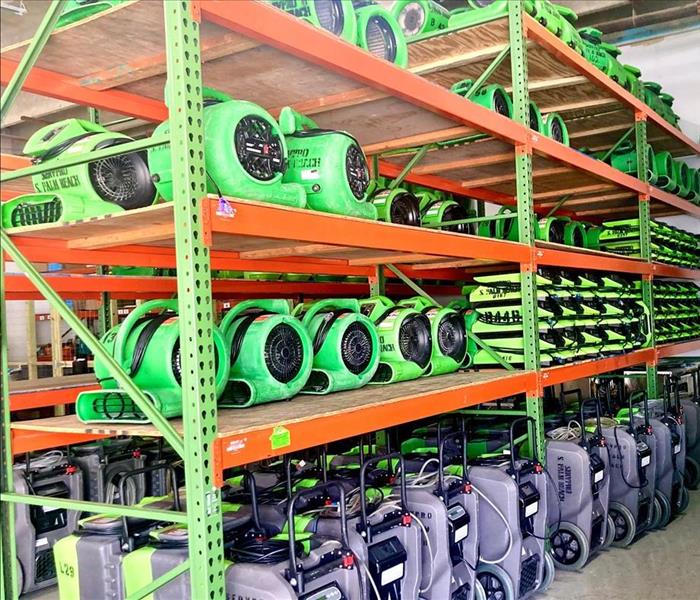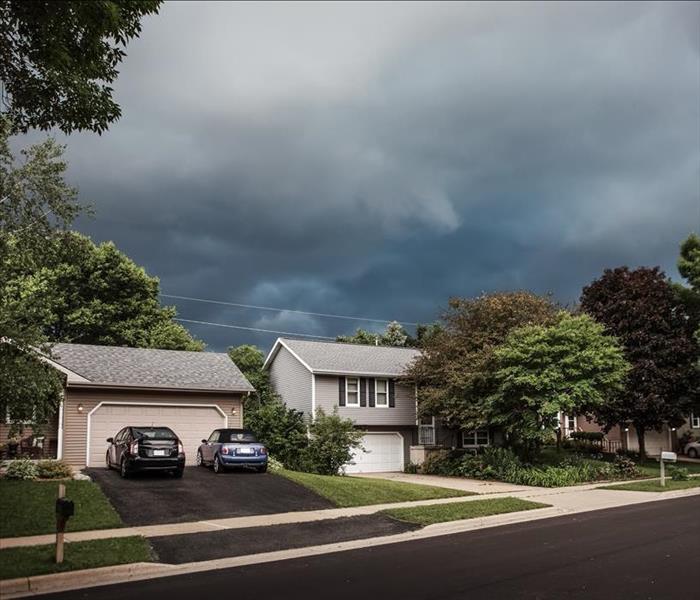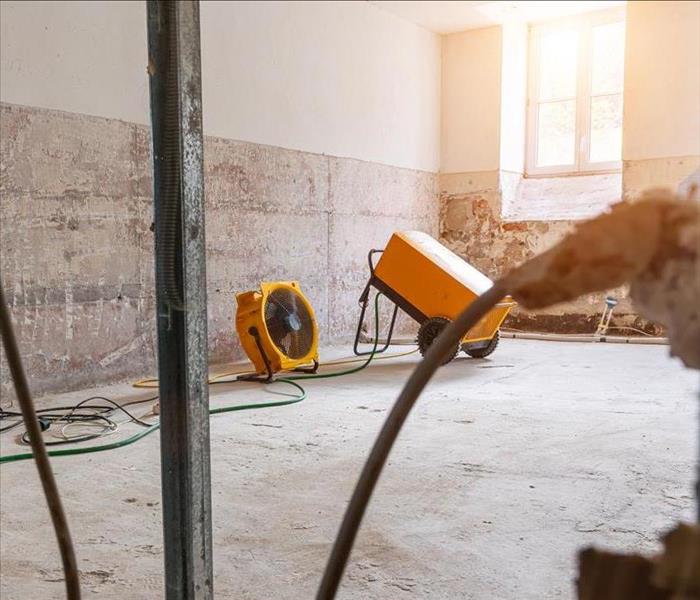24/7 Emergency Water Damage Service
4/18/2024 (Permalink)
 When water damage happens, SERVPRO of Wellington South is here for you
When water damage happens, SERVPRO of Wellington South is here for you
SERVPRO of Wellington South is here for you any time of the day of night. When faced with a water emergency, speed is essential. Delays can be costly. SERVPRO® is Faster to any size disaster™. With 24/7 emergency service, our teams are in place to get to you fast - usually in less than an hour!
For Water Cleanup & Restoration,
Call SERVPRO of Wellington South
561-800-3450
Water damage can come from storms, faulty water heater, broken pipes, and more. No matter the cause, SERVPRO® technicians have the training and skills to get you through your water damage emergency. Our proprietary cleaning solutions, advanced equipment, and decades of experience will help return your property to preloss condition. Our goal is to make it “Like it never even happened.”
What to do when you have water damage:
- Shut off the water at the source
- Turn off the electricity in the affected area
- Call SERVPRO of Wellington South: 561-800-3450
- Our 24/7 response team will quickly dispatch to your location
- Professionally trained SERVPRO® technicians will arrive with specialized equipment for efficient water extraction and drying.
SERVPRO® is Here to Help
Serious mold damage can follow water damage if not addressed quickly. The best thing you can do is act quickly. If your home or place of business has water, mold, or other disaster damage, call SERVPRO®. We have professionals on staff who are specially trained, and who are accessible to take your call 24/7, 365.
Preparing Your Home for Water Damage in the Spring
4/21/2023 (Permalink)
 It is essential that you prepare accordingly to prevent catastrophic and costly water damage.
It is essential that you prepare accordingly to prevent catastrophic and costly water damage.
April showers bring… water damage! Heavy rain and thunderstorms during the spring months can compromise the safety of your home. The excess rain and moisture in the air makes your home ripe for water damage. It is essential that you prepare accordingly to prevent catastrophic and costly water damage.
Follow these guidelines to effectively prepare your home:
- Inspect your property. Start with a broad inspection of your home and surrounding property. Carefully look at your roof, gutters, window wells, pipes, walls, foundation, etc. Make a list of items that need further inspection by a professional. In particular, look for the following signs of vulnerability in, on, and around your home:
- Damaged or missing shingles on your roof. Weakened or impaired roof singles provide a space for water to leak into your home.
- Clogged drains and gutters. These areas should be cleared of debris.
- Water stains or soft spots on walls or ceilings. Look for discolored, peeling, or bubbling paint. Other signs of water damage include brown spots and rings both inside and outside of your home.
- Inadequate sealing around windows, doors, and the respective frames. Sealant should be tight enough to prevent moisture from entering your home. Also, note any cracks or spaces around these vulnerable areas.
- Unsealed caulk throughout your home.
- Finally, inspect your property for any odd smells. Water damage and mold can emit a musty or damp smell.
- Know early warning signs of potential flooding. Do your roof and gutters land right beside the foundation of your home? Consider moving the gutter runoff to another location. If the runoff lands near the foundation of your home, you face a higher risk of flooding.
- Check your flood prevention systems. What good are faulty prevention systems??? Check things like sump pumps and other waterproofing systems to ensure they are in working order prior to the spring rainy season.
- Clean gutter and downspouts at least twice per year. This will keep water flowing off and away from your house.
- Treat your pipes well. Avoid pouring grease and other oil or fats down the drain.
- Know about your home’s shut off valves. Most importantly, identify the location of your home’s shut off valve and know how to turn off the water.
- Avoid making repairs on your own. It is not recommended that you DIY at home repairs to the foundation of your house. Bring in a specialist to handle the fundamental components of your home.
- Read through your home insurance policy.
- Have a plan in place for how you will address water damage to your home. No matter how diligent you are with prevention, sometimes water damage is inevitable. The first step to water damage restoration is assessment of the situation. The following factors impact how water damage restoration should be handled.
- Stop and assess the situation. The circumstances will vary greatly from homeowner to homeowner. Carefully look at your home and property.
- How much water is in or around your home? A minor amount of water damage may be handled independently. However, minor situations can rapidly escalate in severity if there is mold or other problems. Larger water damage restoration projects should be handled by an expert.
- Find the source of the water damage. Some varieties of water damage will be unsafe to clean on your own. For example, black water comes from sewers or other bodies of water and may contain very harmful bacteria. Always have a specialist handle black water damage restoration.
Springtime showers do not need to cause damage to your home. Be proactive in safeguarding your property. When in doubt, seek out a specialist. At SERVPRO of Wellington South we are here for all of your water damage needs. Call us today!
Water Damage Restoration Tips: Prevention and Restoration
10/13/2022 (Permalink)
 SERVPRO of Wellington South is your go-to water damage restoration company.
SERVPRO of Wellington South is your go-to water damage restoration company.
Every state in the United States has experienced some type of flooding within the past six years. And with flooding, comes water damage. Even if you do not live near a body of water, you may still be at risk for facing water damage. Water damage can be hazardous and costly.
Natural causes of water damage include: thunderstorms, hurricanes, heavy rain, even snow melting hundreds of miles away, which makes the flood waters rise. Broken pipes, damaged appliances, sprinkler system issues, sewer line backups, and overflowing tubs and sinks can also lead to water damage. And water damage or the threat of water damages is not to be taken lightly. When water damage occurs, time is of the essence.
Water Damage Prevention Tips
The best thing you can do is have a prevention plan in place for water damage. When water damage occurs, a homeowner must act fast. Prepare yourself now and avoid major damage later.
- Know the sources of water both inside and outside of your building.
- Sources of Interior Water: plumbing, piping, drains, fire sprinklers (piping and sprinkler heads), shower, bath, laundry, condensation sources, pool/spa plumbing and pumps, mechanical systems (evaporators and piping), etc.
- Sources of Exterior Water: neighboring properties, city water supply, exterior plumbing, foundations, groundwater, irrigation systems, roofs and roof drains, septic systems, windows and doors, siding, waterproofing, etc.
- Ensure good water runoff. Clean your gutters and inspect downspouts to ensure they are pointed in the correct direction and working properly.
- Know the location of the stopcock. Ensure family members know where and how to shut off the water supply. Severe damage can occur within minutes of a leak so it is essential to act quickly.
- Periodically and proactively check for leaks. Check under sinks and around appliances such as dishwashers and washing machines. Even minor leaks can cause major water damage if left unattended. For example, a leaky tap can leak up to 57 gallons of water per week.
- Keep gutters clear of debris. Ensure gutters are not blocked or sagging. If either is occurring, clean and repair gutters promptly.
- Inspect your roof on the inside and outside. Check attic for leaking water. Look for discoloration on ceiling. Check the roof exterior for visible damage.
- Pipes, pipes, pipes… If a property will be unoccupied for an extended period of time, turn off the water supply at the stopcock. You may wish to consider draining the system so no water is left in the pipes. In colder climates, use a smart thermostat to maintain a minimum temperature in your home to prevent pipes from freezing. Properly insulate exposed pipes.
- Use a water leak detection device. These devices turn off the water supply should you have a leak. This is especially useful if your property will be vacant for an extended period of time.
- Check for moisture and mold. Flaky paint or wallpaper is a sign of dampness. Be on alert for musty smells and cold walls. This may indicate the need for additional insulation. Look for window and skylight condensation in the mornings. This may mean elevated levels of moisture.
Water Damage Restoration Tips
When water damage occurs, it is imperative that you act quickly. Use the following water damage restoration tips as soon as you notice signs of water damage.
- Immediately disconnect outlets. Upon noticing water damage, unplug all electronics immediately. Even if you do not yet see the severity of damage, be cautious around appliances and gas lines. Failure to unplug electronics could lead to electrical shocks and explosions.
- Eliminate all water and moisture. Use dehumidifiers and water pumps to remove moisture from the air and water from the ground. Stimulate air circulation in the room through the use of air movers, portable ventilators, and open windows. Try to make the room breezy and dry.
- Look for mold. After you have removed the water and moisture, notice the smell. If indoor air smells musty, you may have a mold or mildew problem. Sometimes, household cleaning products will remove the mold. However, mold can spread quickly, often requiring a mold specialist. Do not attempt to fix major mold problems on your own. Mold can lead to serious health problems.
- Remove the damaged materials. Immediately dispose of porous water-soaked materials, such as insulation or carpet, to avoid mildew. Focus on the ceiling and the floors first. Unsealed structural materials, such as unsealed cement, drywall, and wood, should be replaced to support water damage restoration efforts. Water can make the structure of your building unsafe, so it is essential to focus on replacing structural materials first.
- Disinfect all of the remaining areas. Water can contain bacteria and other hazards that are damaging to your health. Once your remove the water and damaged materials, disinfect the entire area before beginning the water damage restoration process. Bacteria can be invisible. Use bleach to wipe surfaces so the mold spores do not continue to grow. The goal is to eliminate any possible bacteria present.
Water Damage Repair with SERVPRO of Wellington South
The water damage restoration process can be tiresome and stressful. Take one step at a time and act quickly. Use safety precautions to avoid harming yourself and your loved ones. Remember, it is possible to return your property to its previous condition. Enlist the help of professionals when needed.
SERVPRO of Wellington South is your go-to water damage restoration company. Please contact us today to assess your water damage and make it “Like it never even happened.”

 24/7 Emergency Service
24/7 Emergency Service


